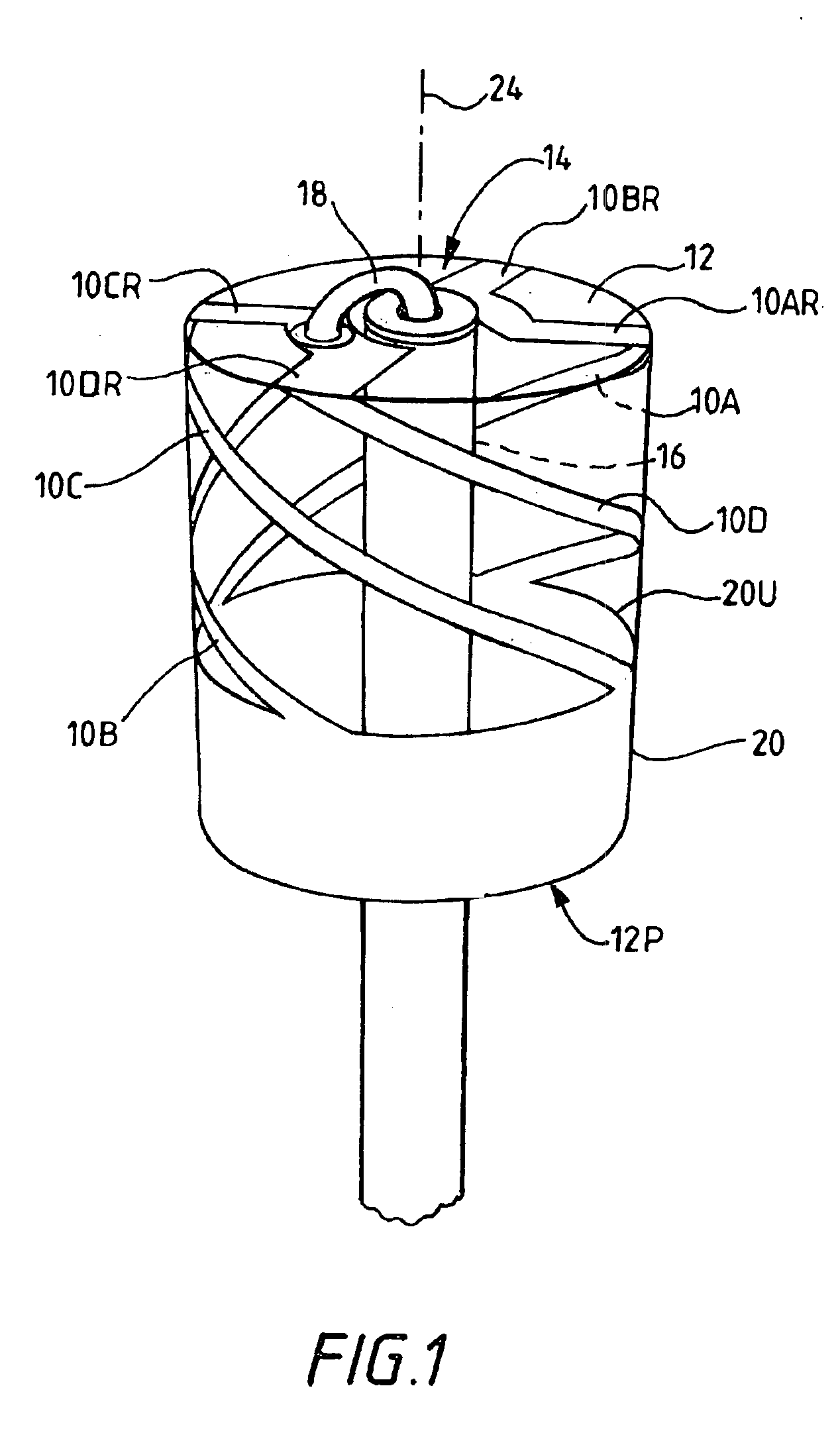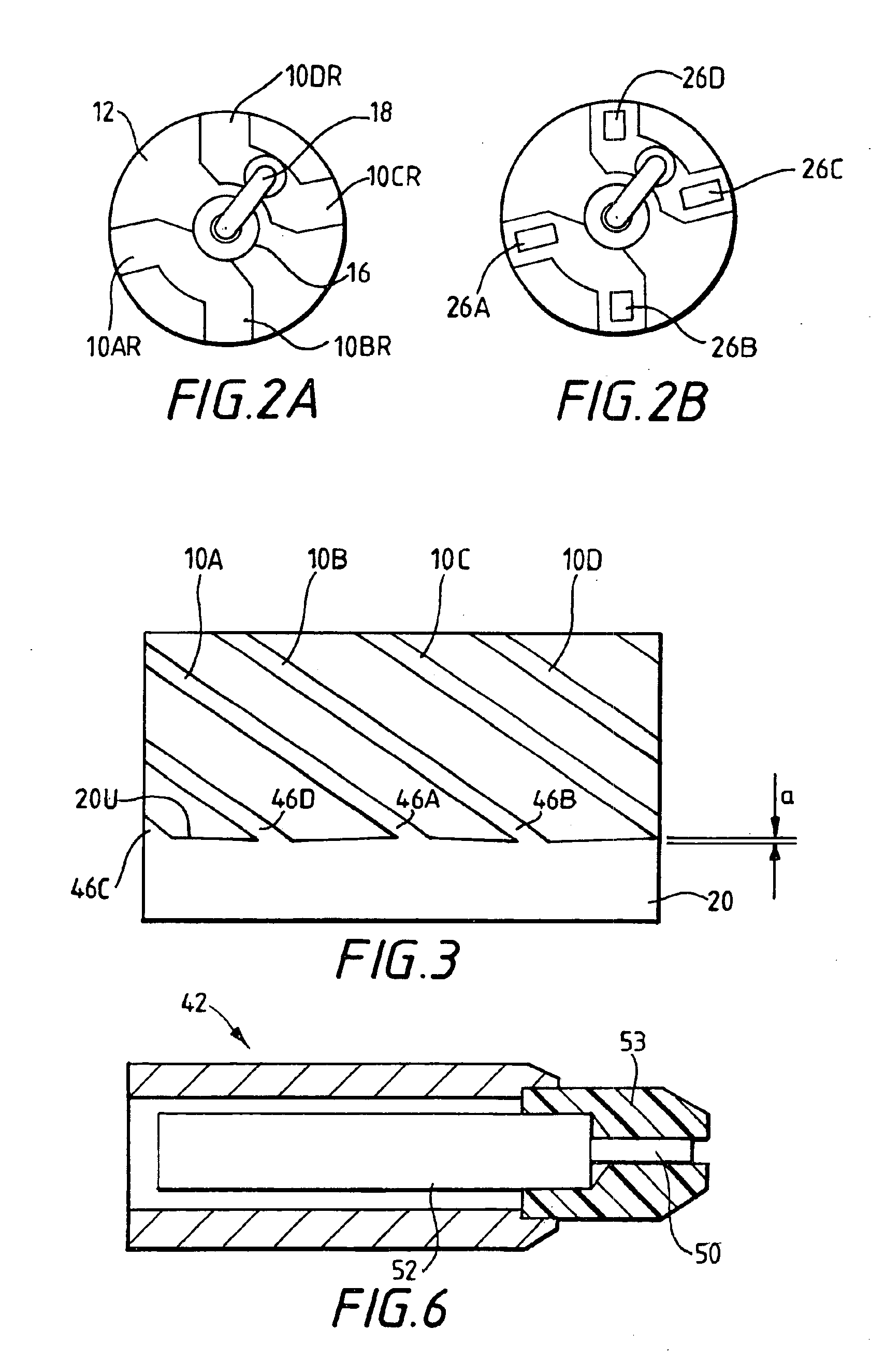Method of producing an antenna
a technology of antennas and manufacturing methods, applied in the direction of electromagnets, non-resonant long antennas, decorative arts, etc., can solve the problem of manufacturing difficulty in achieving sufficiently close dimensional tolerances, and achieve the effect of improving the circularly polarised radiation pattern of antennas, reducing the size of antennas, and increasing the inductance of tracks
- Summary
- Abstract
- Description
- Claims
- Application Information
AI Technical Summary
Benefits of technology
Problems solved by technology
Method used
Image
Examples
Embodiment Construction
[0018]The quadrifilar antenna described below is similar to that described in the above-mentioned British Patent Application No. GB2310543A, the disclosure of which is incorporated in this specification by reference. The disclosure of the above-mentioned related Application No. GB2292638A is also incorporated in this specification by reference.
[0019]Referring to FIGS. 1, 2A, 2B and 3, an antenna to which the present invention is applicable has an antenna element structure with four longitudinally extending antenna elements 10A, 10B, 10C, and 10D formed as narrow metallic conductor track portions on the cylindrical outer surface of a ceramic core 12. The core has an axial passage 14 housing a coaxial feeder with an outer screen 16 and an inner conductor 18. The inner conductor 18 and the screen 16 form a feeder structure for connecting a feed line to the antenna elements 10A-10D. The antenna element structure also includes corresponding radial antenna elements 10AR, 10BR, 10CR, 10DR ...
PUM
| Property | Measurement | Unit |
|---|---|---|
| frequencies | aaaaa | aaaaa |
| resonant frequency | aaaaa | aaaaa |
| relative dielectric constant | aaaaa | aaaaa |
Abstract
Description
Claims
Application Information
 Login to View More
Login to View More - R&D
- Intellectual Property
- Life Sciences
- Materials
- Tech Scout
- Unparalleled Data Quality
- Higher Quality Content
- 60% Fewer Hallucinations
Browse by: Latest US Patents, China's latest patents, Technical Efficacy Thesaurus, Application Domain, Technology Topic, Popular Technical Reports.
© 2025 PatSnap. All rights reserved.Legal|Privacy policy|Modern Slavery Act Transparency Statement|Sitemap|About US| Contact US: help@patsnap.com



